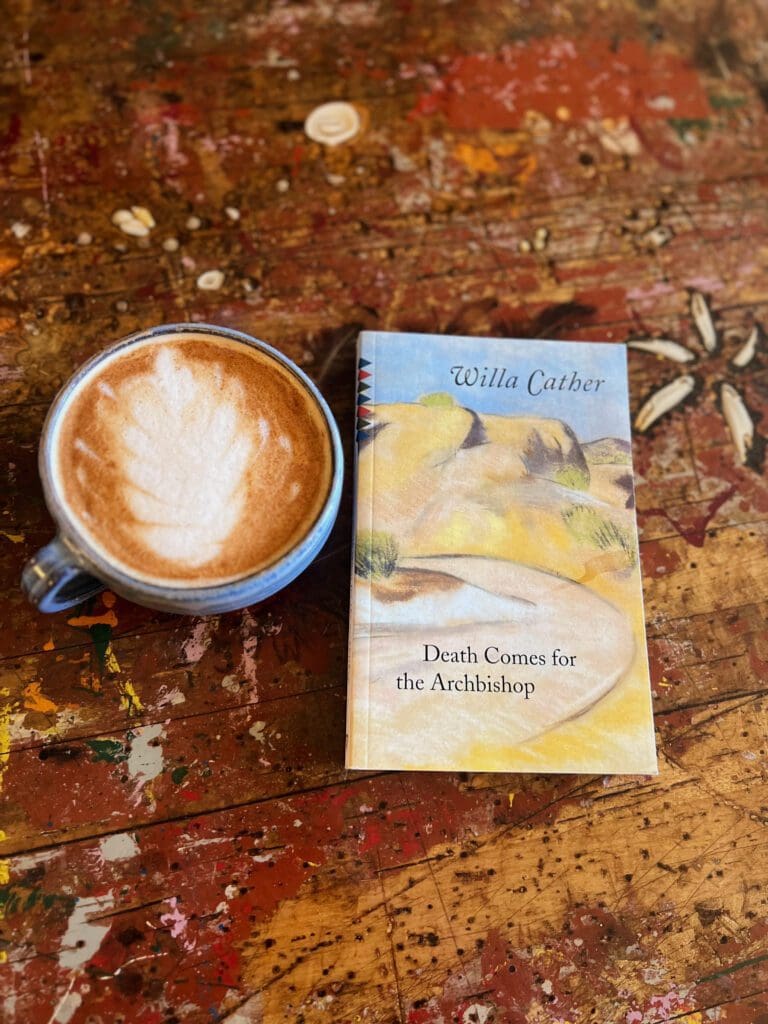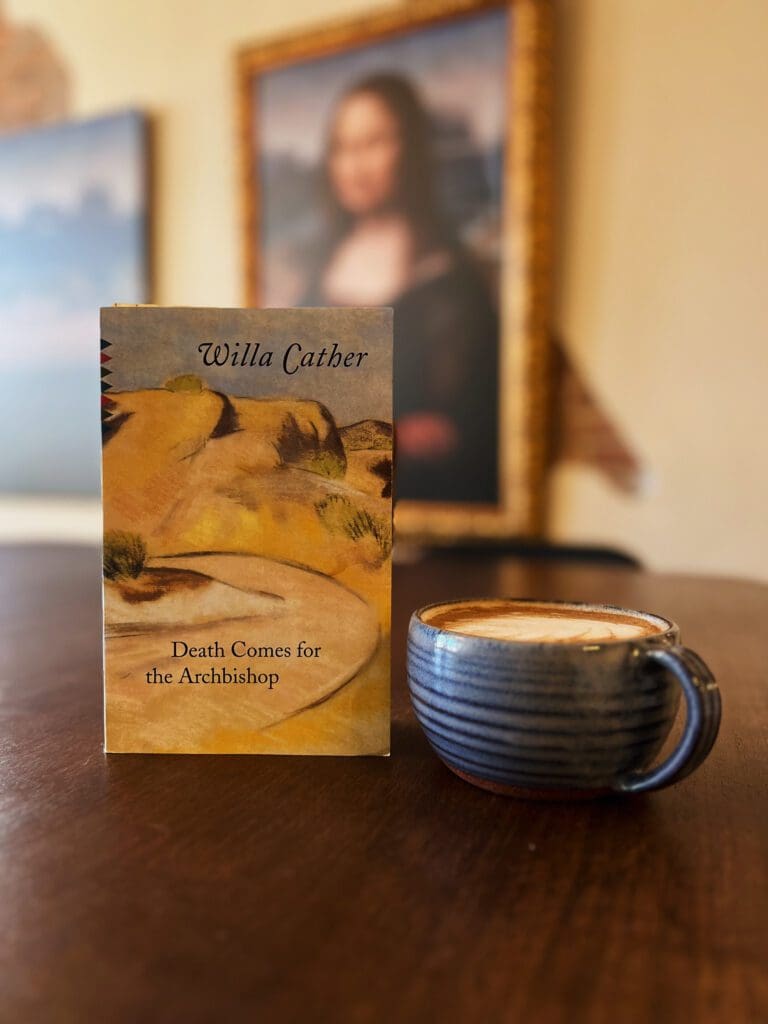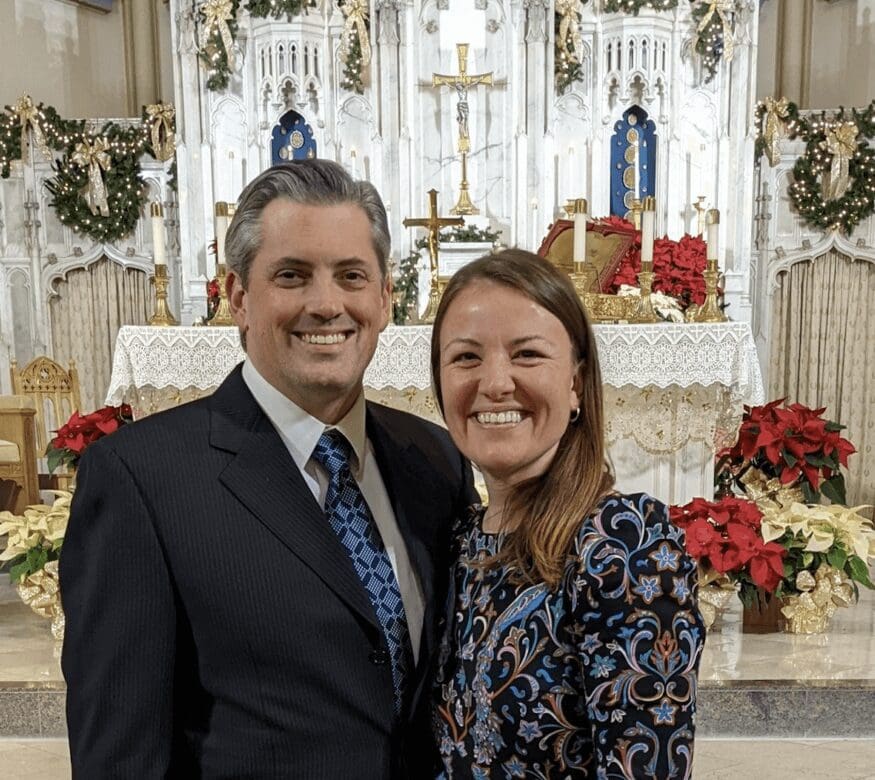Beauty Within Virtuous Relationships
By Nicki Johnston
There is great beauty in Willa Cather’s Death Comes for the Archbishop:
- The striking landscape of the Southwest
- The culture of the native peoples
- The devotions of the Catholics and the relationships between the characters
This last, specifically, the relationship between Bishop Latour and his dear friend Father Vaillant, struck me as the most profound part of this book.
Before we ever meet Father Vaillant on the page, we are introduced to him through Bishop Latour’s thoughts. In his barren journey to his newly appointed pastoral land, Bishop Latour thinks of “his dear Joseph” and how he would call the cruciform tree leading him to safety a miracle (29). This is just the first of many times that we get to know and grow to love Father Vaillant through the eyes and thoughts of his beloved friend.
There are instances in which we see Father Vaillant through his own actions. An example is the funny episode where he insists on cooking his mutton, which will be barely roasted instead of overboiled. Still, most often, due to the narrative structure Cather has chosen for this book, we see Father Vaillant through Bishop Latour’s eyes.
This is interesting, considering that it was a book of letters by the real priest on whom Father Vaillant is based that kept Cather up all night reading about these brave missionary priests in the Southwest. Still, it’s even more beautiful as we consider how this sheds light on this year’s theme of “Year of the Giver” and read this story of this friendship between two men who have so lovingly given themselves to God and one another.

Getting to know Father Vaillant through the tenderness of Bishop Latour’s descriptions means that we might be surprised when, later in the book, we read accurate descriptions of how homely, sickly, and of a “peculiarly unpromising appearance” Father Vaillant really is. We’re told that he is “quite unconscious of his homeliness” (224), and so are we because Bishop Latour sees through to the heart of his beautiful friend.
From the start of their friendship back in seminary, we see how different these two men are. As mentioned in our reading guide, their company is beautifully “complementary” in their biographies, interests, and temperaments. The Vaillants were “people of a much humbler station in the provincial world” (223). The Latours were an old family of scholars and professionals. Father Vaillant “required no books but his breviary” (249), unlike Bishop Latour, who hilariously jumped into the water to save his sinking library. Father Vaillant can’t keep a secret (43), is restless (50), and says himself that he is “often too hasty in [his] judgments” (157). These differences are precisely what Bishop Latour, much more reserved and slower to respond, considers so dear (50).


Father Vaillant is clearly a man of action, but his effort comes from his ability to be affected. We’re told that “he was quickly moved, after the way of sick people” (205), but we also know that he is “intensely interested in his new surroundings” (224). He longs to see his own mountains, but he also makes particular places and flora of his new homeland dear to him, such as Arroyo Hondo and the tamarisk tree, “the companion of his wanderings” (201).
Throughout the book, Bishop Latour calls upon Father Vaillant’s strength and wisdom by invoking his motto, “Rest in action” (36), and his maxim, “If you said your prayers first, you would find plenty of time for other things afterward” (124). Bishop Latour even considers what Father Valliant would do in various situations. Bishop Latour frequently calls Father Vaillant “impetuous” and loving and refers to him as “a man of inconsistencies” (177). Though the Bishop is his superior, Father Vaillant is the most needed in their friendship and not the other way around.
It’s no coincidence, I think, that Bishop Latour’s “dark night” (the most beautiful vignette of the book, in my opinion) takes place after Father Vaillant has been absent from Santa Fe for nearly all of the year. Bishop Latour lacks some strength that he usually draws from Father Vaillant. Finally, through the remembrance of his friend (the physical putting-on of embodied power as represented by the matching cloak they each wear), Bishop Latour musters enough courage to get himself out of bed and into the church where he has the powerful encounter with Sada.
This physical putting-on is most beautifully exemplified by the ring of Father Vaillant that Bishop Latour wears upon his friend’s death. The ring bears the inscription of Auspice Maria (Father Vaillant’s last words upon leaving Santa Fe, as mentioned by Sister Ann Astell). It was likely not the inscription of words but the intertwined A and M that perfectly represented these two men’s loving friendship.
The most striking example of this friendship is when Latour ushered his friend toward the ship that would carry them to their new life in America. Father Vaillant considered leaving his father, his sister, and his country the most brutal act of his life, “not a parting, but an escape—a running away, a betrayal of family trust for the sake of higher trust.” That trust, of course, is in God, but it’s also strengthened by his friendship with Bishop Latour. Father Joseph was able to respond to God’s call because of what Bishop Latour had been to him at that hour. He felt indebted to Bishop Latour, promising himself that “I will be to him now what he was to me that day when we stood by the roadside, waiting for the diligence to Paris, and my purpose broke, and, he saved me” (204).
Of course, it is this moment (in the central pivot of the relationship between Bishop Latour and Father Vaillant) that Bishop Latour recalls on his deathbed when, having been preceded in death by his dear friend, he is ushered by him into eternal life. Death did, indeed, come for the Archbishop, and it came “of having lived” (267) a whole, beautiful, and, inspired by his dear friend, valiant life.
About Well-Read Mom
In Well-Read Mom, women read more and read well. Our hope is to deepen the awareness of meaning hidden in each woman’s daily life, elevate the cultural conversation, and revitalize reading literature from books. If you would like to have us help you select worthy reading material, we invite you to join and read along with us. We are better together! For information on how to start or join a Well-Read Mom group visit our website wellreadmom.com


